
How Occupational Therapy Improves Emotional Regulation in Children
Unlocking Emotional Resilience in Children Through Occupational Therapy
Introduction: The Need for Emotional Regulation
Emotional regulation is a critical skill for children, impacting their ability to thrive academically, socially, and personally. This article explores how occupational therapy (OT) serves as a powerful tool to enhance emotional regulation in children, particularly those facing challenges such as autism spectrum disorder (ASD), ADHD, and sensory processing disorders. By examining the developmental stages of emotional regulation, specific OT techniques, and the wide-ranging benefits of these interventions, we gain insight into why and how occupational therapy makes a significant difference in children's emotional and social lives.
The Foundations of Emotional Regulation
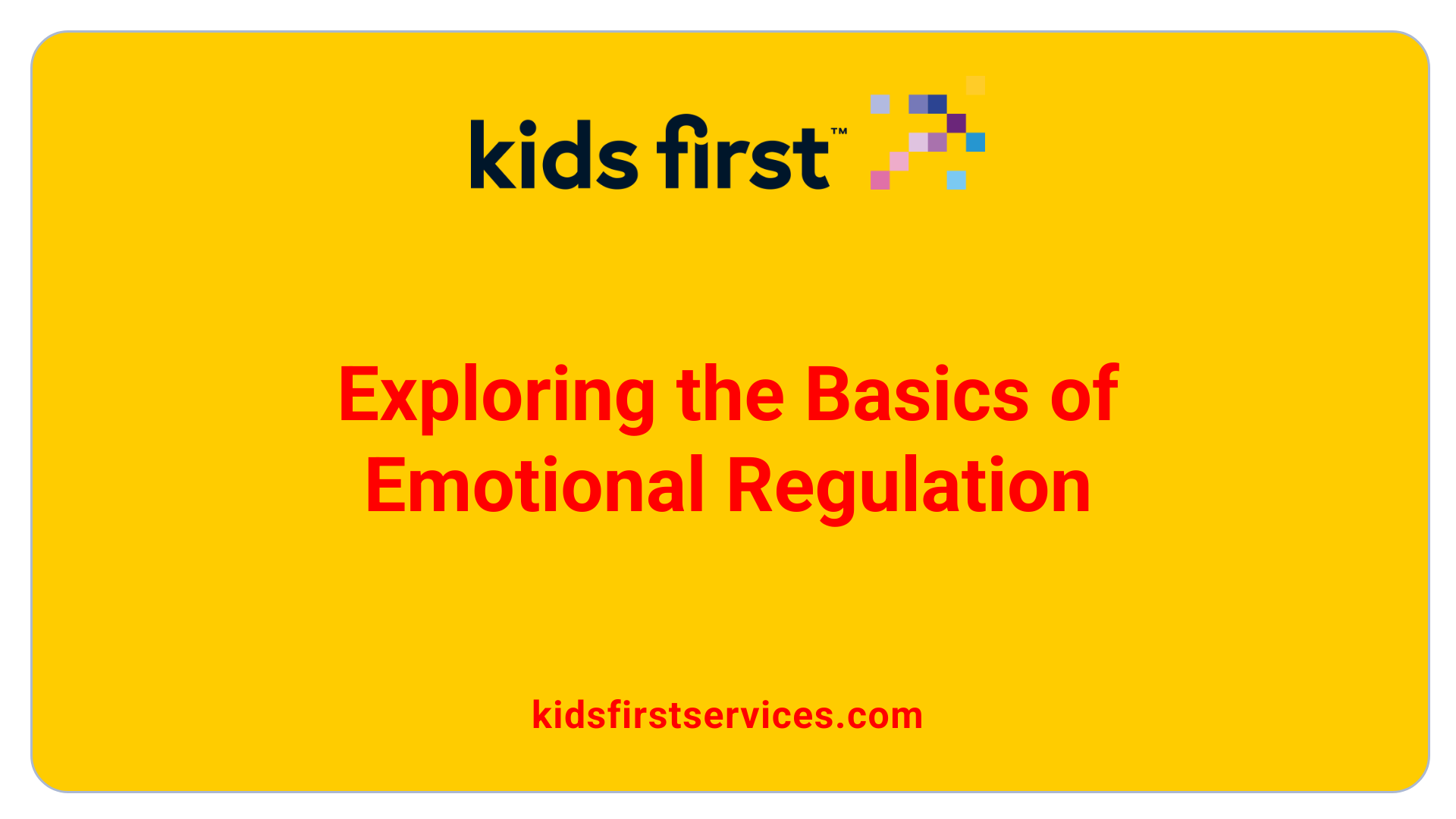
What is Emotional Regulation?
Emotional regulation refers to the ability to manage and adjust emotional responses to various situations. It encompasses recognizing emotions, expressing them appropriately, and responding to stimuli in a socially acceptable manner. This skill is crucial for navigating daily interactions and forming relationships.
Why is Emotional Regulation Important in Children?
Emotional regulation is vital for childhood development, impacting not just emotional health but also academic performance and social interactions. Children who effectively manage their emotions are more likely to build positive relationships with peers and adults, leading to a supportive social environment.
Without these crucial skills, children may face increased challenges such as depression, academic struggles, and difficulties in social situations. Furthermore, mastering emotional regulation contributes to greater self-confidence and enhanced coping abilities, essential for managing stress and overcoming obstacles throughout life.
How Does Emotional Regulation Develop?
The journey of developing emotional regulation begins in infancy and continues into adolescence. Children experience various developmental stages:
- Infants: Begin with basic comfort strategies.
- Toddlers: Exhibit impulsive behaviors while learning to express feelings.
- Preschoolers: Start understanding how to play with others, recognizing shared emotions.
- School-age children: Develop a better grasp of different perspectives.
This gradual growth signifies that emotional regulation is nurtured through learning and engaging interactions, highlighting the importance of early interventions and support from caregivers to facilitate this development.
By fostering these skills, we can improve children's emotional health and pave the way for their future success.
Developmental Milestones and Occupational Therapy's Role
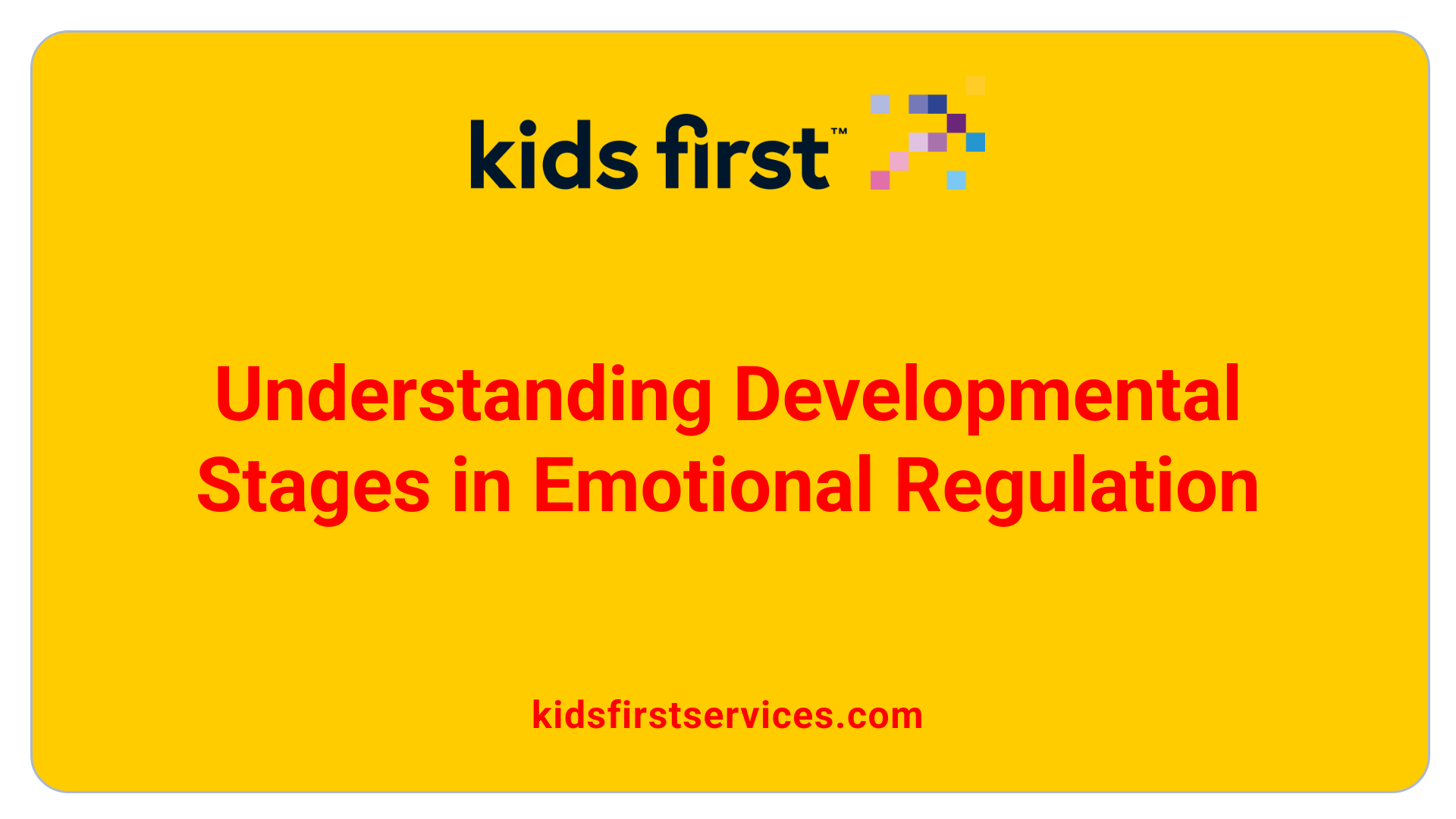
What are the developmental stages of emotional regulation in children and how can occupational therapy help?
Children's emotional regulation develops through various stages. It begins with basic self-soothing strategies in infancy, where babies learn to manage stress and comfort themselves. As they progress into toddlerhood, impulsive behaviors may be common as they start to grasp emotions like frustration and excitement. By age five, emotional responses become more complex, incorporating skills like empathy and sharing during play. Significant growth in these skills continues until around age nine, when children can better understand and manage their emotions.
The role of caregivers is pivotal in this developmental journey. Attentive caregivers not only model emotional responses but also create a secure environment. This foundation fosters effective emotional management, allowing children to learn how to navigate their feelings through interactions. Secure attachments significantly enhance a child's ability to self-regulate emotions, making it essential for families to engage actively in their child's emotional growth.
Occupational therapy (OT) plays a vital role in supporting emotional regulation across these stages. Therapists implement structured interventions that teach coping skills tailored to the child's needs. They enhance attention and planning abilities, promoting self-discipline through consistent practice and positive reinforcement. Such targeted strategies are especially beneficial for children facing emotional regulation challenges, including those with Autism Spectrum Disorder and traumatic backgrounds. This highlights the importance of early and ongoing occupational therapy support for children's holistic emotional development.
Techniques Used in Occupational Therapy
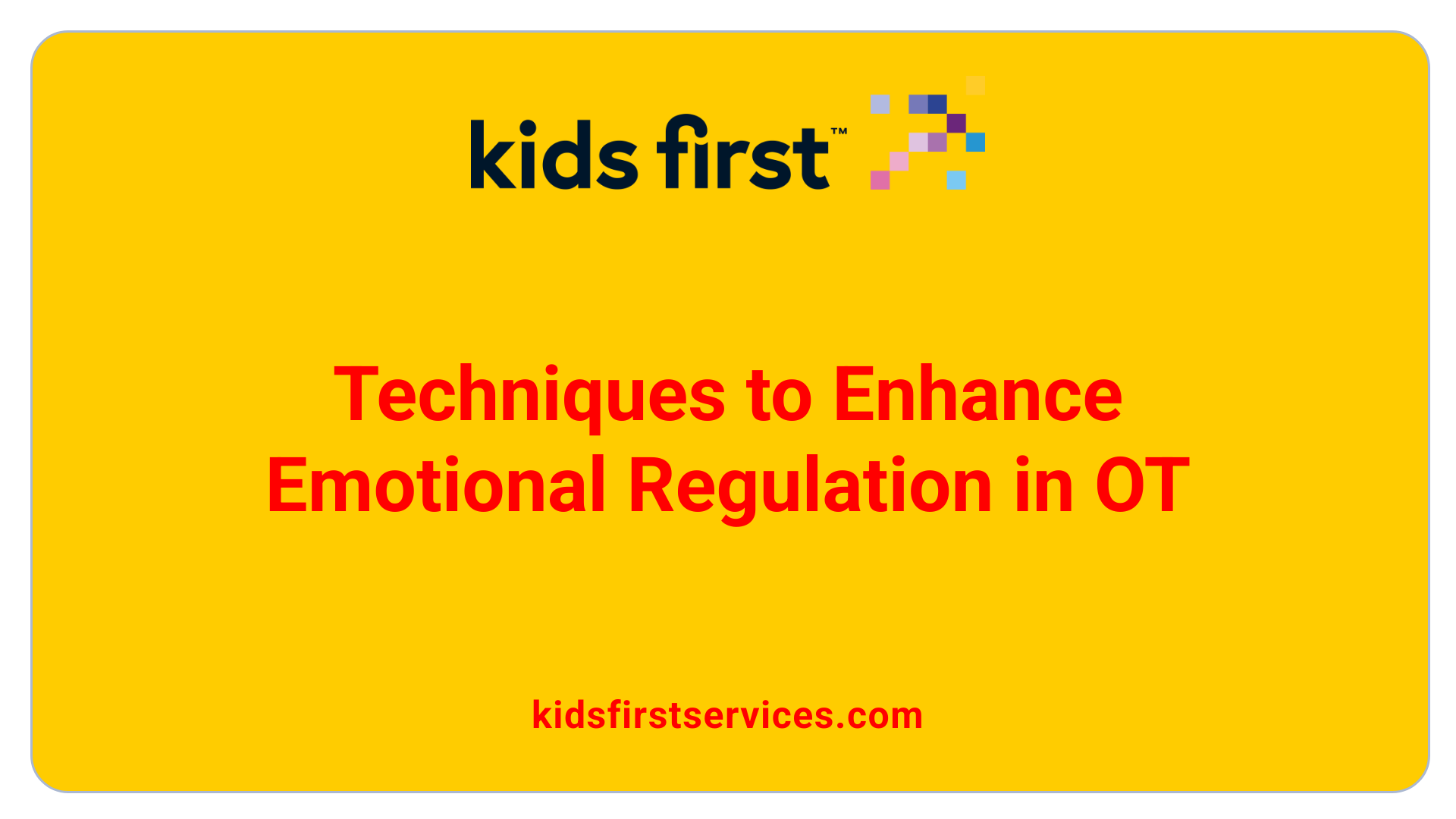
What specific techniques are used in occupational therapy to improve emotional regulation in children?
Occupational therapy employs a range of techniques designed to improve emotional regulation in children experiencing various challenges. These methods specifically target issues such as difficulty identifying emotions, intense emotional responses, and impulsivity.
Sensory Integration Activities
One of the primary approaches is sensory integration activities. These activities use interventions like weighted blankets, deep pressure stimulation, and tactile sensory play to help children manage sensory input effectively. Engaging in play-based activities helps them process their feelings and respond to emotional stimuli in a healthier way.
Cognitive-Behavioral Strategies
Additionally, therapists apply cognitive-behavioral strategies to address negative thought patterns. This includes helping children identify their emotions and understand how these emotions influence their behavior. Techniques such as mindfulness and deep breathing exercises promote calming responses during stressful situations.
Social Skills Training
Moreover, social skills training is essential. This component helps children learn how to interact positively with peers, recognize social cues, and manage conflicts. Activities often include role-playing and turn-taking games to reinforce appropriate emotional responses within social contexts.
Incorporating these diverse approaches allows occupational therapists to develop personalized treatment plans, ultimately enhancing emotional regulation and improving a child's overall well-being.
Social Development and Emotional Regulation Through OT
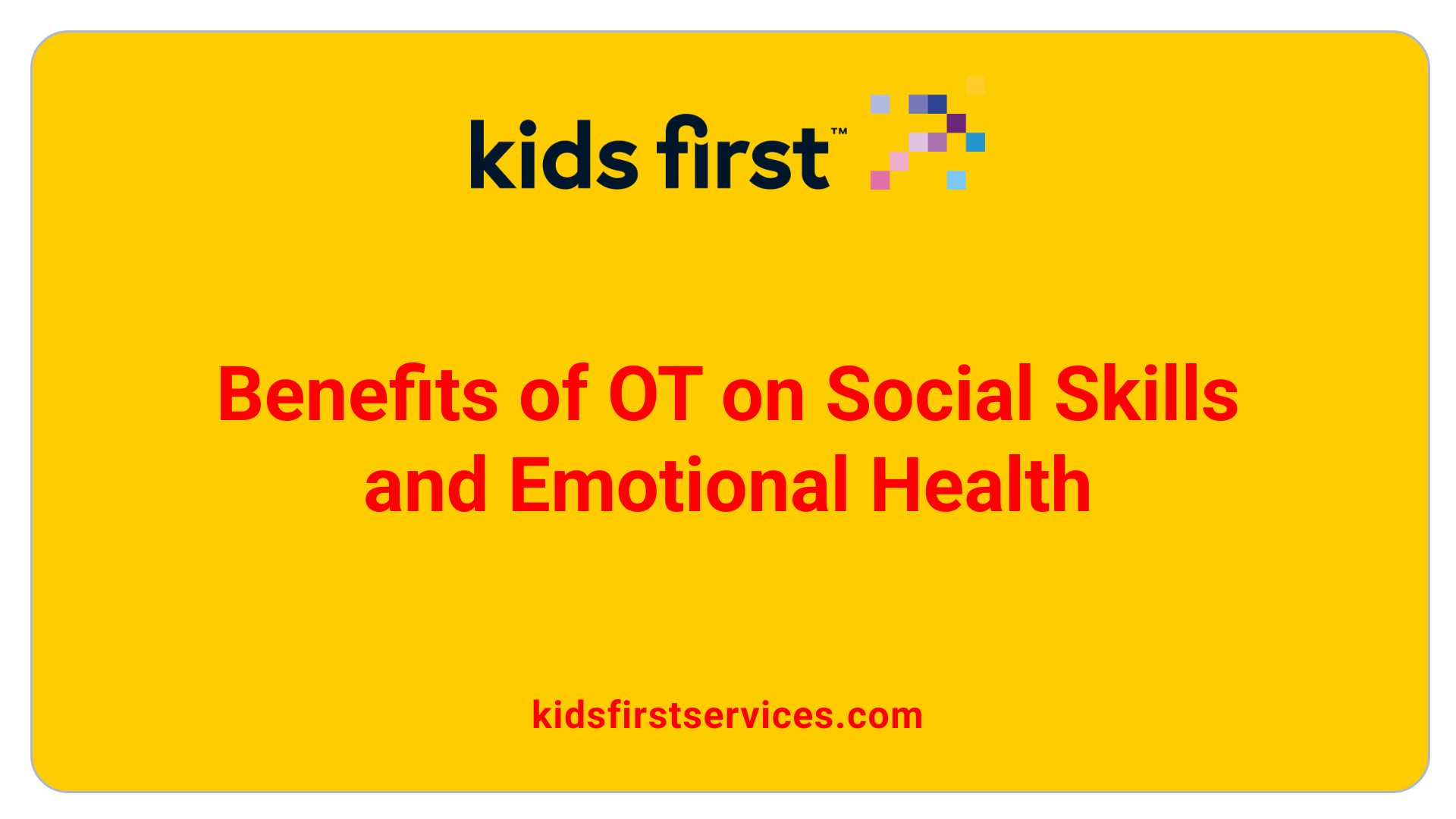
How does occupational therapy benefit emotional regulation and social development in children?
Occupational therapy (OT) supports emotional regulation and social development in children by providing tailored interventions that enhance their ability to manage emotions and engage in social interactions. Through play-based therapies, children have opportunities to express their feelings and understand social cues. These experiences are essential for developing healthy coping strategies, which are vital for effective emotional regulation.
OT focuses on enhancing social skills such as cooperation, sharing, and communication through structured activities that promote peer interaction. This helps children learn to navigate social situations and build meaningful relationships. Additionally, occupational therapists employ strategies like sensory integration therapy that help children manage emotional responses to various stimuli, creating a calmer and more balanced emotional state.
Impact on social skills
Beyond emotional regulation, OT plays a crucial role in improving social skills. Children learn to interpret body language, take turns, and manage conflicts—all of which are vital for successful interactions with peers. Programs like "Exciting School" illustrate this by showing significant improvements in social interaction abilities among participants, enhancing their emotional intelligence.
Overall well-being
Overall, the holistic approach of OT intertwines emotional and cognitive development. This nurturing environment not only enhances emotional well-being but also increases children's confidence in social settings. Consequently, the skills they acquire in therapy help them thrive both emotionally and socially, laying the groundwork for positive relationships throughout their lives.
Occupational Therapy's Evidence-Based Impact on Autism
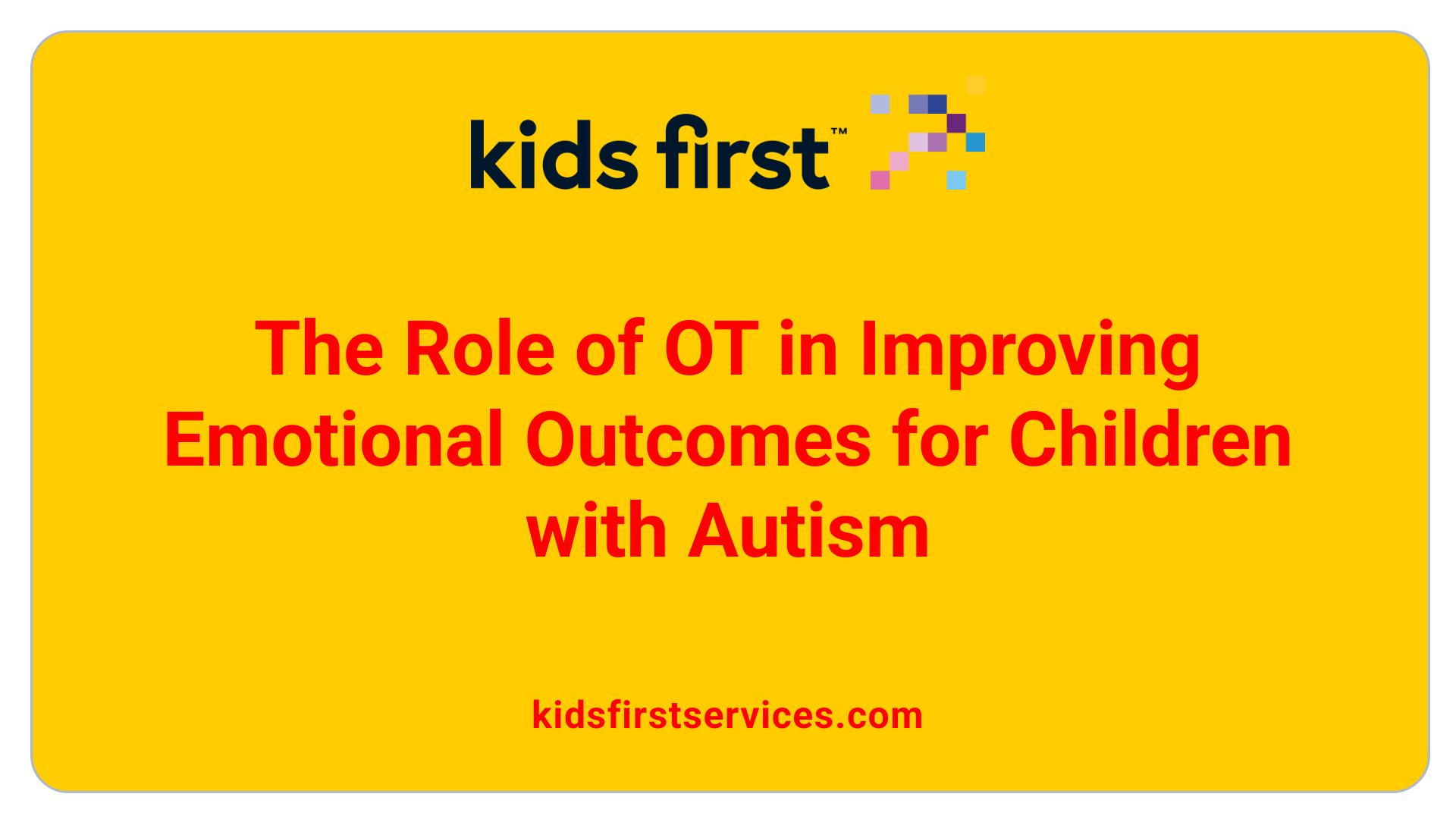
What evidence exists regarding the impact of occupational therapy on children with autism and their emotional regulation?
Research highlights the significant benefits of occupational therapy (OT) for enhancing emotional regulation in children diagnosed with autism spectrum disorder (ASD). Evidence reveals that tailored interventions designed specifically for these children lead to improvements in emotional management and cognitive skills.
Key Findings from Recent Studies
- Improvement in Self-Efficacy: Children demonstrate increased confidence in their abilities to engage in daily activities after OT sessions.
- Reduction in Negative Emotional Responses: OT interventions, like the Zones of Regulation (OT-ZOR), have shown decreases in irritability, hyperactivity, and emotional reactivity.
- Development of Therapeutic Alliances: A strong connection between therapists and children significantly boosts the effectiveness of interventions, fostering a supportive environment that is crucial for progress.
Impact on Well-Being
Children with ASD who participated in structured OT programs showed marked improvements in their emotional regulation. These outcomes not only enhance emotional stability but also improve social interactions and overall quality of life.
Programs, such as OT-ZOR, have demonstrated the potential to positively affect emotional responses, underscoring the importance of emotional regulation interventions in promoting children's social engagement and academic success.
As research continues, the demand for specialized assessment tools will grow to address the distinct emotional regulation challenges faced by these children, further enhancing the efficacy of occupational therapy.
Comparing OT with Other Emotional Regulation Therapies
How do occupational therapy interventions compare with other therapies for emotional regulation?
Occupational therapy (OT) interventions for emotional regulation focus on a holistic approach that integrates physical, emotional, and social aspects of child development. This is achieved through practical, play-based activities that promote engagement and reflect real-life situations, allowing children to learn necessary skills in a supportive environment.
In contrast, therapies such as Emotion Regulation Therapy (ERT), Cognitive Behavioral Therapy (CBT), and Dialectical Behavior Therapy (DBT) primarily emphasize cognitive and emotional processing strategies. ERT incorporates various approaches to help individuals recognize and reframe intense emotions, aiding their emotional management. CBT targets thought patterns affecting emotions and behaviors, while DBT combines acceptance-based strategies with behavior change techniques, which is particularly beneficial for individuals with borderline personality disorder.
While OT uniquely develops emotional regulation through direct, hands-on involvement and sensory integration, the cognitive focus of ERT, CBT, and DBT can complement OT practices. The integration of OT with these therapies can create a robust support system, fostering better emotional regulation among children, especially those with special needs.
Collaborative benefits
Bringing together occupational therapy with other therapeutic modalities enriches emotional regulation interventions. Occupational therapists can address the sensory and practical aspects of emotional regulation, while cognitive and dialectical approaches provide the mental frameworks necessary for understanding and managing emotions effectively. This multidisciplinary cooperation promotes comprehensive support tailored to the specific needs of individual children, thereby enhancing their ability to navigate emotional landscapes skillfully.
Conclusion: A Pathway to Emotional Well-Being
Occupational therapy provides invaluable support for children struggling with emotional regulation, offering comprehensive strategies that integrate sensory, cognitive-behavioral, and social skill-building techniques. By targeting various stages of emotional development and focusing on individual needs, OT helps children not only manage their emotions but also excel in social scenarios. This holistic approach not only improves the immediate emotional and social capabilities of the children but also lays the groundwork for successful lifelong emotional health. As evidence mounts regarding the benefits, particularly for conditions like autism, occupational therapy stands out as a promising avenue for fostering resilience and emotional balance in children.
References
- Supporting Emotional Development through Pediatric OT
- How To Help Your Children Manage Big Emotions - AIM Therapy
- Helping Kids Regulate Their Emotions | Nature Based OT
- Emotional Regulation and Executive Function - The OT Toolbox
- How Occupational Therapy Supports Emotional Regulation in ...
- A Pilot Study of Improving Self-Regulation and Social Interaction ...
- The Unique Role of Child-Led Occupational Therapy in Emotional ...




